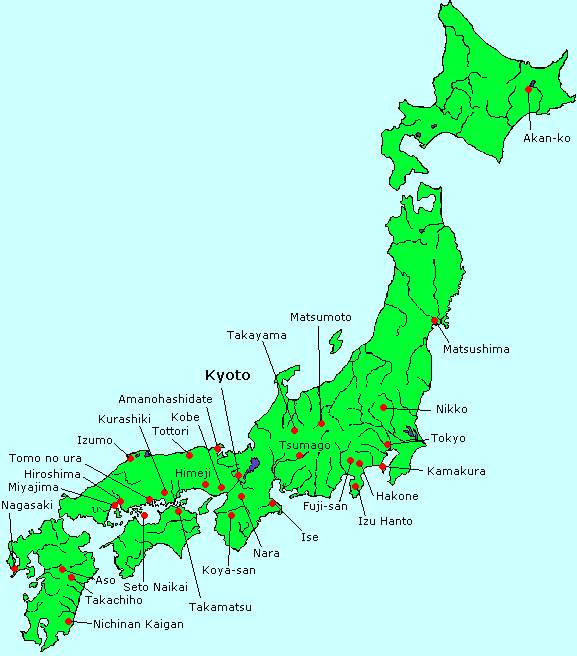
It has been exciting and I have enjoyed being here. I've visited the national parks which were very fun. When I first came I was greeted by going to the hot springs and taking a "bath". There are many fun festivals that are associated with the seasons. I am teaching junior high school english at a public school and I am enjoying it immensely. I love the school lunches here. They are good for the students learning about the fact that they sometimes need to work together and it is very fun to join in with this class period and they learn to help each other. Such as when a class would drop their soup and would need the other classes to help them out and give them food. The food triangle is fun and we will sometimes have "races" to see who eats all there food with the correct bites (3 foods at once). They will take a spork full of meat, rice and lettuce and chew it and then start again.
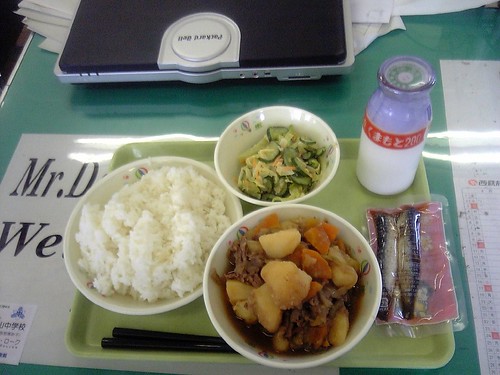
The role of the history books is played differently than in the U.S. In the way that in the U.S. the history books talk about our mistakes and our very important parts of our history. But, in Japan the history books only talk about how Japan is the victim of the wars and the other countries and don't talk anything about how Japan attacked the other countries and such.
 This is a jug made by the Chavin Tribe. This jug that looks like a cat and may have been used to carry water. It has many details such as the swirls, the paws, claws and the head.
This is a jug made by the Chavin Tribe. This jug that looks like a cat and may have been used to carry water. It has many details such as the swirls, the paws, claws and the head. 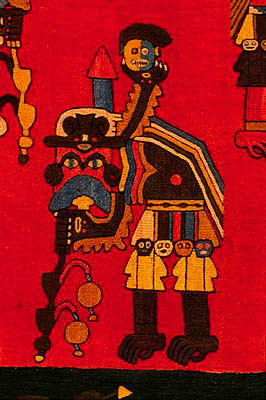
.png) This is a pitcher made by the Nazca. It is made in the shape of a crocodile and that may mean that they lived near a river.
This is a pitcher made by the Nazca. It is made in the shape of a crocodile and that may mean that they lived near a river. 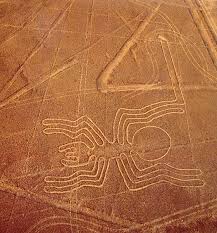 These are Nazca "lines" or drawings in the ground. The largest group of them is 660 ft. across. Scientists believe that they may have religious meanings. They were made by scraping away the red pebbles on top and allowing the white sand underneath to show.
These are Nazca "lines" or drawings in the ground. The largest group of them is 660 ft. across. Scientists believe that they may have religious meanings. They were made by scraping away the red pebbles on top and allowing the white sand underneath to show.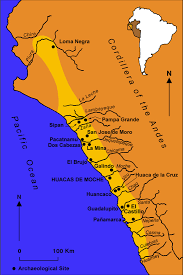 The Moche lived in the northern part of Peru. The yellow highlights where they lived and where the Moche had control.
The Moche lived in the northern part of Peru. The yellow highlights where they lived and where the Moche had control.  This is a mask that the Chimu would have used for ceremonies.
This is a mask that the Chimu would have used for ceremonies.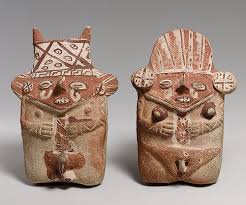 These were probably used to store food, much like tupper-ware is used today. They may have also been of religious meaning.
These were probably used to store food, much like tupper-ware is used today. They may have also been of religious meaning.  This is Machu Picchu an ancient Incan city high in the Andes. Machu Picchu is located 8,000 ft above sea level. It is situated on a mountain 50 miles NW of Cuzco the capitol of the Inca.
This is Machu Picchu an ancient Incan city high in the Andes. Machu Picchu is located 8,000 ft above sea level. It is situated on a mountain 50 miles NW of Cuzco the capitol of the Inca. A skull with anemia
A skull with anemia Corn or Maize is a food that the Mayan's ate
Corn or Maize is a food that the Mayan's ate Anemic blood cells
Anemic blood cells